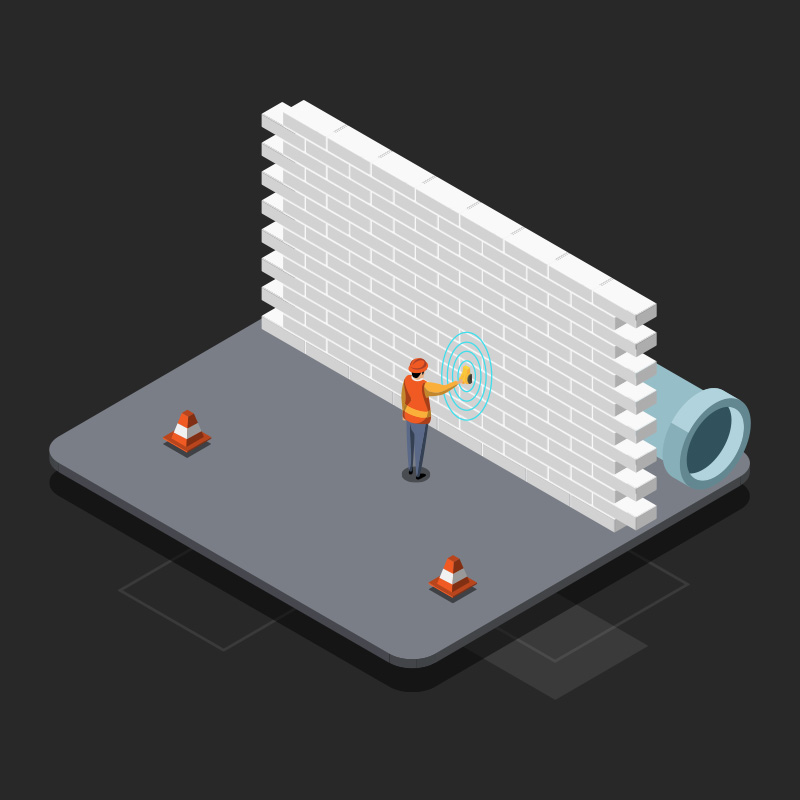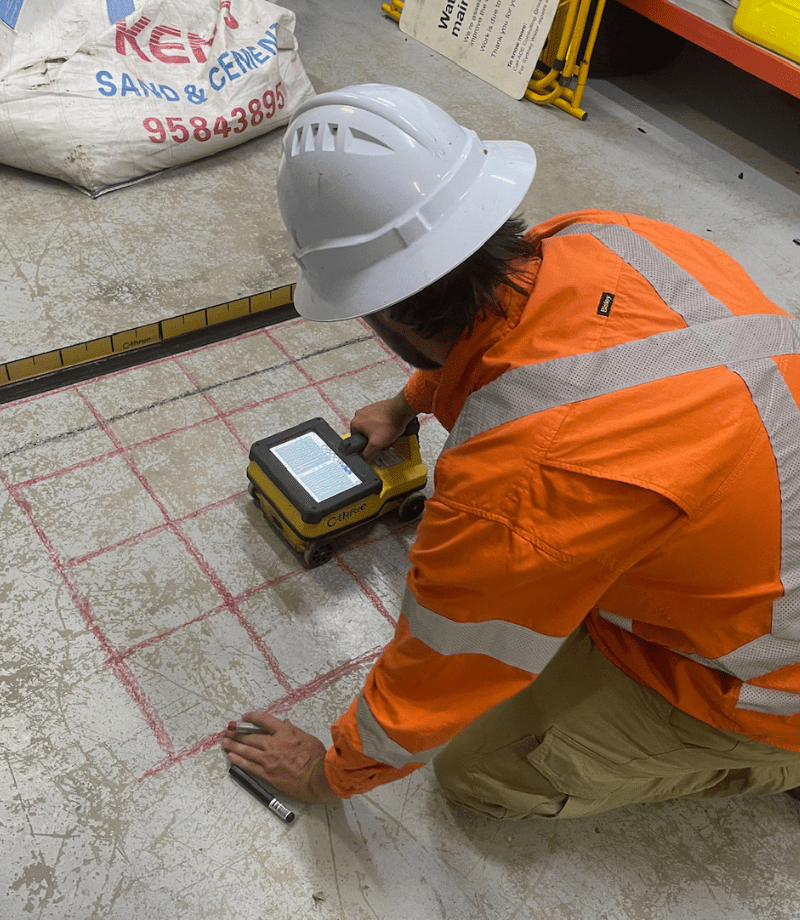Enhance Your Job with RainierGPR Concrete Scanning Services
Enhance Your Job with RainierGPR Concrete Scanning Services
Blog Article
Checking Out the Secret Advantages of Concrete Scanning in Building And Construction Projects
In the world of contemporary construction techniques, the usage of concrete scanning technology has actually emerged as a crucial tool for making certain project performance and structural integrity. From improving safety actions to precisely spotting energies hidden underneath the surface, the advantages of concrete scanning are complex. The capability to streamline job timelines and reduce expenses while maintaining existing structures is a testimony to the value this modern technology gives the building and construction industry. As we dive into the nuanced benefits of concrete scanning, it comes to be apparent that its effect expands far past surface-level assessments, providing a glance into the elaborate internet of advantages waiting to be discovered.
Boosted Precaution
Making use of innovative concrete scanning modern technology boosts safety and security measures on construction websites by giving exact discovery of prospective risks hidden beneath the surface. This modern technology makes it possible for building and construction groups to recognize rebar, channels, post-tension cords, and other obstructions prior to excavation or boring, considerably reducing the threat of crashes. By identifying these aspects specifically, workers can avoid damaging crucial structural components, hence protecting against injuries, hold-ups, and costly repairs.
In addition, concrete scanning plays a crucial duty in making sure the stability of existing structures throughout developments or remodellings. By spotting weak points, spaces, or deterioration within concrete aspects, engineers can attend to these issues proactively, boosting the overall safety and security and durability of the structure. This proactive strategy not only minimizes the risk of architectural failures however also lessens the potential for mishaps created by unexpected architectural deficiencies.
Basically, the execution of concrete scanning technology acts as a proactive security action that safeguards both building employees and the architectural integrity of buildings, inevitably adding to the general success and effectiveness of building and construction projects. - RainierGPR Concrete Scanning
Accurate Detection of Energies
Concrete scanning modern technology helps with exact recognition of underground utilities, improving building and construction site security and effectiveness. Exact detection of utilities is important in building and construction projects to avoid expensive problems, task delays, and most significantly, make certain the security of employees and the public. By using innovative scanning technologies such as ground-penetrating radar (GPR) and electromagnetic induction, building groups can draw up the area of hidden pipelines, wires, and various other energies with high degrees of precision.

Time and Cost Efficiency

Concrete scanning technology makes it possible for construction groups to precisely locate rebar, post-tension cable televisions, and other ingrained objects within concrete structures. This specific information assists in staying clear of costly errors such as unexpected damage to important components during exploration, reducing, or coring activities. In addition, by identifying possible hazards ahead of time, the need for expensive repair services or revamp due to problems can be decreased, causing cost financial savings for the project.
Moreover, the ability to swiftly and accurately discover energies under the surface area without creating any kind of damages anonymous not just saves time but also avoids costly disruptions to existing facilities. In general, the time and cost performance advantages of concrete scanning make it an important tool for boosting building and construction job administration and execution.
Conservation of Architectural Stability
Preserving the architectural stability of buildings and infrastructure is extremely important in making certain long-lasting stability and safety and security. Concrete scanning plays a crucial duty in this preservation procedure by permitting building professionals to recognize prospective risks to the structural stability of a building or framework before they escalate right into major concerns. With the usage of sophisticated scanning technologies such as ground-penetrating radar (GPR) and electro-magnetic induction, building teams can non-invasively analyze the condition of concrete frameworks, locate rebar, post-tension wires, and other ingrained aspects, and determine any gaps, cracks, or damage within the concrete.
Improved Project Preparation
In order to guarantee the successful execution of building and construction tasks, careful interest to detail and extensive planning are important components that stem from a comprehensive understanding of the architectural problems identified through concrete scanning. Inevitably, integrating concrete scanning into the project preparation phase enhances control among team participants, promotes proactive analytic, and contributes to the successful distribution of building tasks within spending plan and routine constraints.
Verdict
Finally, concrete scanning offers countless advantages in construction jobs. By enhancing precaution, properly finding utilities, boosting time and cost performance, preserving architectural integrity, and assisting in job preparation, concrete scanning verifies to be an important device for successful task execution. click this Its capability to mitigate threats, increase effectiveness, and ensure job honesty makes it a vital asset for building and construction professionals.
In the world of modern-day construction methods, the utilization of concrete scanning innovation has actually emerged as a critical device for ensuring job effectiveness and architectural integrity.Concrete scanning innovation allows building and construction teams to precisely find rebar, post-tension wires, and other embedded items within concrete frameworks. Through the use of innovative scanning technologies such as ground-penetrating radar (GPR) and electromagnetic induction, building groups can non-invasively analyze the condition of concrete structures, find rebar, post-tension wires, and other embedded aspects, and determine any kind of voids, fractures, or damage within the concrete.
In order to make certain the successful execution of building jobs, careful attention to detail and extensive preparation are essential components that stem from a detailed understanding of the architectural conditions determined with concrete scanning. Eventually, integrating concrete scanning into the task planning stage enhances control among group participants, fosters proactive problem-solving, and contributes to the effective distribution of building and construction tasks within budget plan and these details routine constraints.
Report this page